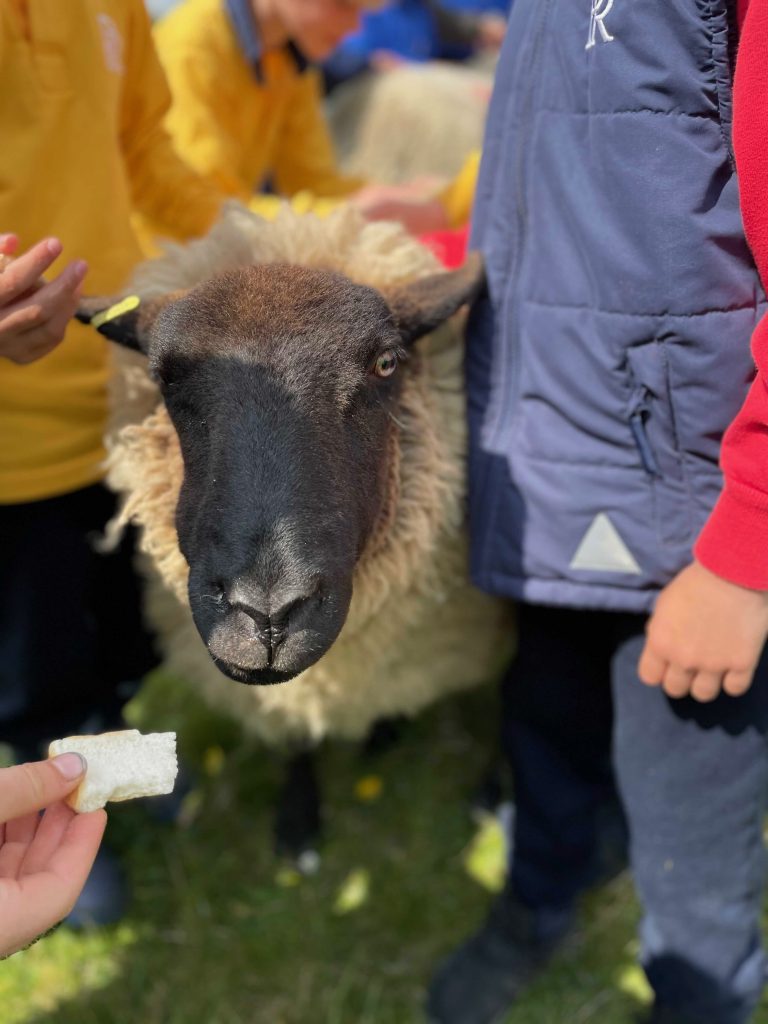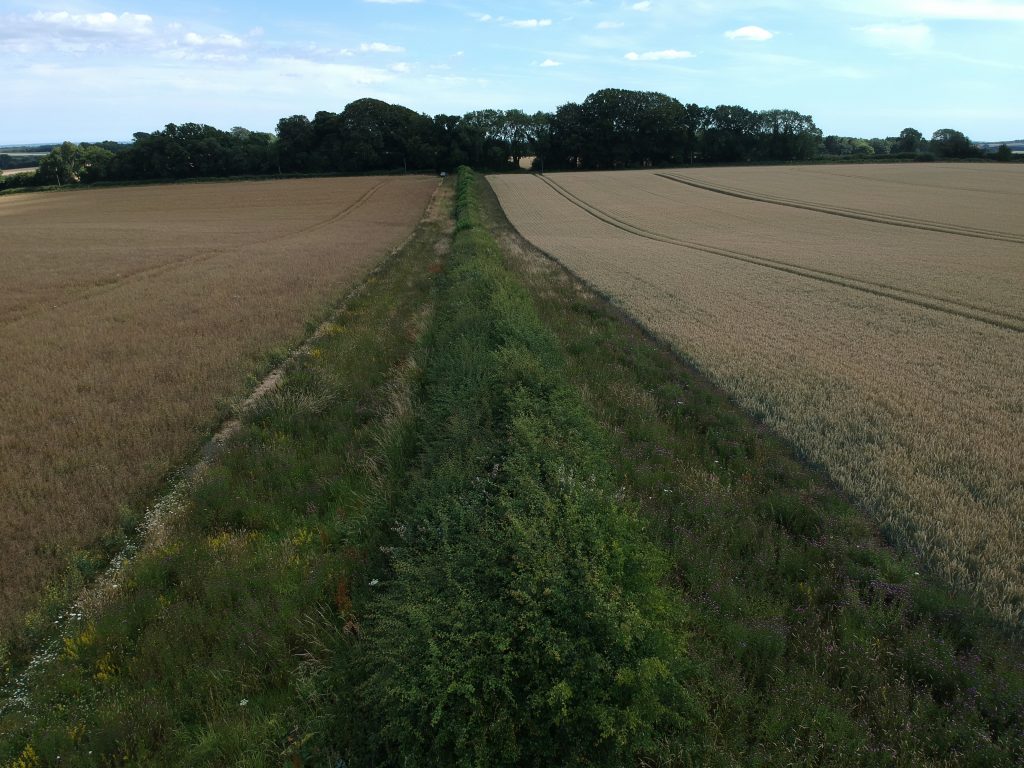Here are a couple of paragraphs a little stronger in flavour than my usual approach, which is generally aimed at a mixed audience.
Firstly sheep – love ’em or hate ’em?
We usually rear a few orphan lambs every year, to provide some tame sheep for children to interact with on visits, and on this particular occasion one of our young ewes surpassed herself, standing patiently while half a dozen children stood around her stroking her, feeling her wool, and feeding her toast. Since that visit she herself has lambed, producing triplets, as predicted by the scanner, but as sheep, not the most highly developed productive species, are wont to do, one lamb has already died.

Let’s face it, the intensive breeding that has gone into other farm species resulting in spectacular improvement, has completely by-passed sheep. Why do we still have them growing a fleece, which no-one wants, harbours dung, maggots and all manner of other nasties, costs money to remove, makes them die of heat exhaustion in the summer, obscures the teats for new-born lambs, makes them itchy and when they lie down for a rub get stranded on their backs? Our forebears managed to breed wool onto them, why on earth have we not yet bred it off again? And then there is the udder. Cows generally have one calf, yet their udders sprout teats at all four corners. Sheep, selected for multiple births for decades, still only two teats, why do we go on with them? A good question, on this farm they are not regarded as much more than a management tool for arable crops, soil improvement and HLS options, and zoo animals for entertainment, if we tried to get any more from them we would be endlessly disappointed. Apologies to hard working sheep farmers across the south west, but can you show me a wealthy sheep farmer anywhere? James Rebanks has to write books and appears on radio and TV all the time, and Adam Henson has turned the same into an art form!
Secondly hedges – How to value them properly ?
Some parts of Dorset are currently exercised about hedges, and where they should feature in future land management schemes, particularly as carbon sinks, and how they should be valued in carbon footprinting. One of the carbon footprint companies has put the following values on hedges:
Managed hedges 3.67 tonnes CO2/ha/yr
Large growth hedges with trees 13.49 tonnes CO2/ha/yr
Seeing as there are 101 ways to manage hedges, this looks like a car crash waiting to happen. Why such a vast difference in value, and why mention only two violently different approaches? How are your hedges managed? Annual flailing; alternate year flailing; flailing to keep them at same size as they have always been; flailing leaving 2 inches above the last cut, flailing almost to death to make it look like you want it to die; trimming the old fashioned way with a cutterbar with removal and composting of excess growth; laying, coppicing or pollarding on a rotation, taking useful timber for firewood and composting the rest, or burning the whole lot on a huge bonfire; or no management at all, letting the larger trees fall over when they reach the end of their life, then cut up for firewood or let it rot in place. The environmental consequences for each of these are many and varied, and would need a book the size of the Complete Works of Shakespeare if DEFRA want to legislate for each and every one in the style it usually does. That of course would be bonkers.

Hedges, as with their treatment in BPS as EFA, have to potential to drive the whole ELMS project off the rails. There can be no argument that hedges are a fabulous environmental resource, and there is much we can learn about their management to make them even more effective in our journey towards carbon neutral. It will be no good tagging them on as an addendum, they will need to be front and centre for some areas of the country. With judicious use of field margins containing wild flowers they can be corridors that connect up huge areas of formerly unconnected habitat. Intelligent treatment will be required, and I would advise against a headlong rush to sell them off to the footprint offsetting company paying the highest rates today.

You have my vote on sheep. The Dales and downs were there long before sheep. Environmental grazing by tough small cattle will give a different effect but if the pasture is less manicured then perhaps more people would stay on the path and they could be bred to kick stray dogs.
The data on hedges clearly illustrates that defining the level of public good is in danger of consuming all the funds that might support it. I would suggest that all practices need to be scored on a variety of factors: habitat, carbon sequestration, public amenity, food production being just four. However all scores will be approximate and contentious.
Sheep are certainly a challenge in every sense. When I worked with the buggers I sometimes used to think their main evolutionary purpose was to give Collies a reason to get up in the morning!
Hi George, nice one as usual ! I do enjoy your posts. For those of us with no connection to the delights of sheep (or ‘supported’ farming (!)) can you explain why sheep prices are so high? Were we not told that post Brexit the French would not buy our lamb, there would be a glut and the bottom would fall out of the sheep market. Instead of which prices seem seem sky high. What is it going on and why – if you know?